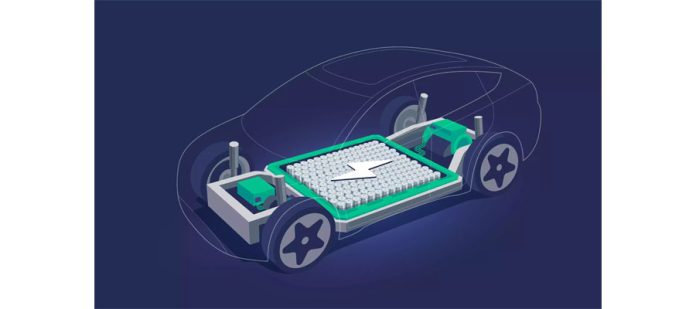Undoubtedly, designing an electric vehicle (EV) battery pack capable of providing a range of up to 1,000 miles on a single charge has been a major challenge. However, this challenge is becoming more manageable thanks to the efforts of researchers at the Illinois Institute of Technology (IIT) and the U.S. Department of Energy’s (DoE) Argonne National Laboratory. They have successfully developed a lithium-air battery that has the potential to turn this dream into reality.
When considering the lithium-air battery, stands out as a type of battery that employs solid electrolytes instead of the conventional liquid variety. This unique feature allows the battery to achieve an energy density four times higher than that of lithium-ion batteries. Consequently, it has the potential to significantly extend the driving range of electric vehicles (EVs). The increased energy density of lithium-air batteries directly addresses one of the primary concerns related to EVs by offering the possibility of substantially longer driving ranges.
Contrastingly, lithium-ion batteries stand as the prevailing battery technology employed in electric vehicles (EVs) at present. These batteries have demonstrated remarkable efficiency, reliability, and commercial viability for powering EVs. Lithium-ion batteries provide numerous advantages for EVs. They possess a comparatively high energy density, facilitating extended driving ranges. Their favourable power-to-weight ratio enables efficient acceleration and performance. Additionally, lithium-ion batteries exhibit prolonged lifespans compared to alternative battery technologies, with the capability to endure multiple charge and discharge cycles.
Lithium-ion batteries and lithium-air batteries differ in their fundamental chemistry and energy storage mechanisms. Lithium-ion batteries utilize lithium ions that move between the cathode and anode during charging and discharging, while Lithium-air batteries rely on the reaction between lithium metal anodes and oxygen from the air. This distinction leads to variations in energy density and practicality. Lithium-air batteries have the potential for significantly higher energy density due to the higher theoretical capacity of lithium metal. This promises longer driving ranges for electric vehicles (EVs). However, lithium-air batteries are still in the early stages of development, facing challenges related to stability and efficient recharging. In contrast, Lithium-ion batteries are well-established and widely used in EVs, boasting proven performance, reliability, and an established infrastructure. They are continuously being improved, making them the current standard for electric vehicle applications.
The discovery of reserves for Lithium-ion batteries has sparked optimism for the growth of the EV industry in India, potentially reducing the country’s dependency on China. However, it is challenging to predict whether India will adopt lithium-air batteries to replace Li-ion batteries. This is primarily due to the early stage of development of lithium-air battery technology. There are significant technical hurdles that must be addressed before lithium-air batteries can be effectively integrated into EVs. These challenges include ensuring the stability of battery components, developing efficient recharging methods, and extending the battery’s lifespan. Currently, it is difficult to confirm whether Lithium-air batteries can serve as a replacement for Li-ion batteries. This uncertainty arises from the fact that Lithium-air battery technology is still in its early stages of development. However, if it successfully progresses through all the necessary stages of advancement, Lithium-air battery technology could indeed emerge as a viable alternative to Li-ion batteries.









